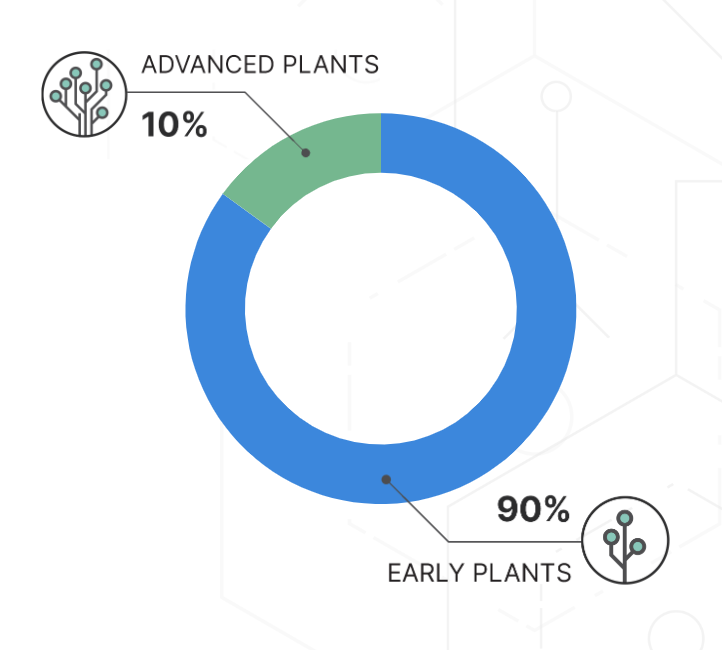Leadership in Manufacturing: Building High-Performing Teams for the Digital Era
🔑 Key Takeaways
- Leadership in manufacturing today requires blending timeless team-building principles with future-focused digital skills development.
- Upskilling in manufacturing is essential for closing the talent gap and enabling teams to operate confidently in digitally integrated environments.
- Digital transformation in manufacturing is driven by people, not just technology—making workforce readiness a top competitive advantage.
Introduction
In today’s rapidly evolving manufacturing landscape, the pressures of digitization, automation, and workforce transformation are more intense than ever. Yet amidst the swirl of change, one thing remains constant: the importance of high-performing teams.
At the core of operational excellence lies strong, capable teams empowered to adapt, solve, and lead. And in this new era, leadership in manufacturing is less about overseeing tasks—and more about enabling people to thrive in an increasingly digital ecosystem.
So, what does it take to lead a high-performing team in the age of Industry 4.0? The answer lies at the intersection of timeless leadership principles and modern, strategic approaches to digital transformation in manufacturing.
High Performance Is Still the Goal—But the Game Has Changed
Regardless of the tools on the floor—whether it's a manual workstation or a robotic assembly line—the definition of a high-performing team remains largely unchanged. These are teams that:
- Execute tasks consistently and autonomously
- Demonstrate agility by rotating across roles
- Maintain high standards and take pride in their work
However, what has changed dramatically is the context in which these teams operate. In the past, performance might have been measured by how efficiently a team wrapped or bundled a product. Today, success could mean interpreting a digital dashboard, diagnosing a machine using predictive maintenance tools, or optimizing workflow using cloud-based systems.
The skills required to meet those new expectations are broader, deeper, and far more technology-driven. And that’s where modern manufacturing leadership must evolve.
Why Upskilling Manufacturing Teams Is a Strategic Priority
With new technology arriving faster than ever, the gap between existing capabilities and future demands continues to widen. Teams that once thrived in manual environments now need to integrate with software, sensors, and AI-powered machines.
To remain competitive, manufacturers must prioritize upskilling in manufacturing as a long-term, business-critical investment. This doesn’t mean sending people off to expensive training programs. It means embedding learning into daily operations, aligning skill-building with business goals, and empowering individuals to grow alongside the tools they use.
Upskilling in Action
Consider a production line technician. A decade ago, they may have only needed to operate a specific machine. Today, that same technician is expected to:
- Understand and troubleshoot basic automation logic
- Read and act on real-time performance data
- Communicate insights across cross-functional teams
If your organization isn’t actively developing those skills, it’s not just that individual who falls behind—it’s your entire production capability.
Leading Through the Shift: What Manufacturing Leaders Must Do
Great leadership in manufacturing today means helping teams bridge the gap between legacy systems and future operations. That requires a blend of strategic foresight, operational empathy, and relentless focus on people.
Start by asking: What will our workforce need to know not just to survive—but to lead—over the next five years?
Build a Skills Inventory for the Future
One of the most impactful things a leader can do is create a living, evolving skills inventory. This isn't just a checklist of current competencies, but a forward-looking map that includes:
- Technical skills aligned with digital tools and systems
- Analytical and critical thinking skills
- Collaboration, communication, and cross-functional versatility
With this inventory, you can identify where gaps exist, where strengths can be leveraged, and how to guide your workforce toward the next level of performance.
Aligning Culture with Capability
Skills are only one piece of the equation. High-performing teams don't just know what to do—they care about why they’re doing it.
That’s where culture becomes a critical driver of success. In an environment of constant change, leaders must foster a mindset of curiosity, accountability, and resilience. It’s not enough to mandate new tools or platforms; people need to feel empowered to explore them, fail safely, and get better over time.
That’s why organizations that succeed in digital transformation in manufacturing are those that align capability-building with a strong cultural foundation. When employees are engaged and connected to the company’s vision, they’re far more likely to embrace change—and lead it.
The Competitive Edge of Acting Early
Waiting to adapt is no longer an option. The manufacturers that win in this digital economy are those who act decisively—equipping their people with the right skills and tools before the pressure hits.
Acting early gives you:
- Faster adoption of new technology with fewer disruptions
- Improved employee retention and morale
- A clear advantage in innovation, responsiveness, and agility
And perhaps most importantly, it sends a clear message to your workforce: we’re investing in you—because you’re essential to our future.
Final Thoughts: From Supervising Work to Enabling Growth
Leadership in manufacturing is shifting from supervising work to enabling growth. Yes, equipment matters. Yes, systems must be optimized. But it’s your people—skilled, agile, and empowered—who will determine whether your organization thrives in this new era.
The path forward is clear:
- Define what high performance means in a digital-first context
- Identify and close skills gaps with intentional upskilling strategies
- Align your leadership approach to encourage autonomy and continuous improvement
Digital transformation in manufacturing isn’t just about new technologies. It’s about building a workforce that’s ready to lead, adapt, and innovate—at every level.
As a leader, the most valuable transformation you can drive isn’t on your factory floor.
It’s in the mindset and capability of the people who make it all happen.
 | Discover Untapped Potential in Your Manufacturing ProcessPrepare, define, and execute the Industry 4.0 strategies at scale.
|
You might also enjoy:






